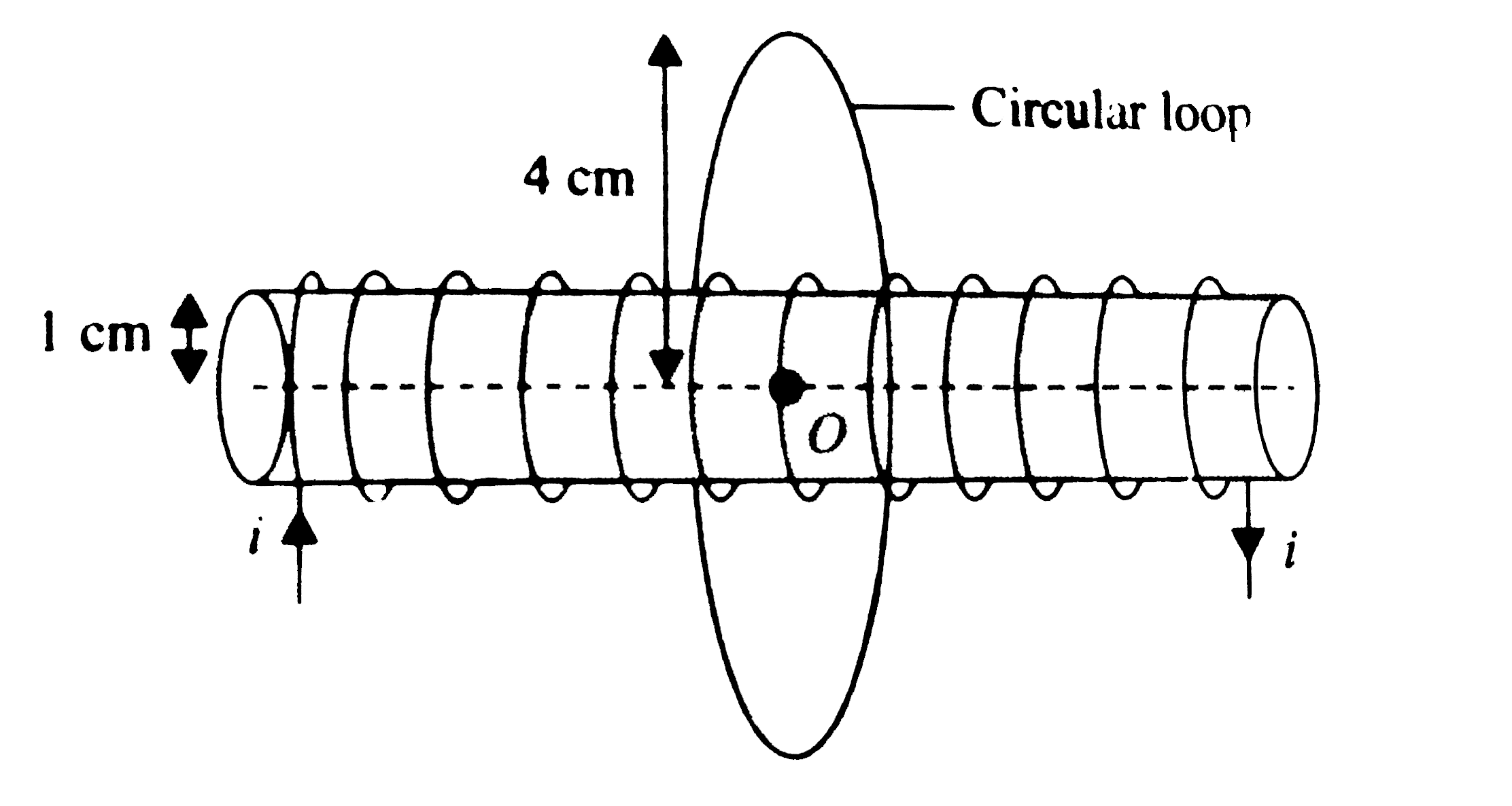The line through ˆi+3ˆj+2ˆkand⊥to the line →r=(ˆi+2ˆj−ˆk)+(2ˆi+ˆj+ˆk)and→r=(2ˆi+6ˆj+ˆk)+μ(ˆi+2ˆj+3ˆk) is
→r=(ˆi+2ˆj−ˆk)+λ(−ˆi+5ˆj−3ˆk)
→r=ˆi+3ˆj+2ˆk+λ(ˆi−5ˆj+3ˆk)
→r=ˆi+3ˆj+2ˆk+λ(ˆi+5ˆj+3ˆk)
→r=ˆi+3ˆj+2ˆk+λ(−ˆi−5ˆj−3ˆk)
The correct Answer is:B
NA
Topper's Solved these Questions
- PLANE AND STRAIGHT LINE IN SPACE Book:OBJECTIVE RD SHARMA ENGLISHChapter:PLANE AND STRAIGHT LINE IN SPACE Exercise:Exercise
Explore 33 Videos
- MISCELLANEOUS EQUATIONS AND INEQUATIONS Book:OBJECTIVE RD SHARMA ENGLISHChapter:MISCELLANEOUS EQUATIONS AND INEQUATIONS Exercise:Chapter Test
Explore 29 Videos
- PROPERTIES OF TRIANGLES AND CIRCLES CONNECTED WITH THEMBook:OBJECTIVE RD SHARMA ENGLISHChapter:PROPERTIES OF TRIANGLES AND CIRCLES CONNECTED WITH THEMExercise:Chapter Test
Explore 55 Videos
Similar Questions
A long solenoid having n = 200 turns per metre has a circular cross-section of radius a1=1cm. A circular conducting loop of radius a2=4cm and resistance R=5(Ω) encircles the solenoid such that the centre of circular loop coincides with the midpoint of the axial line of the solenoid and they have the same axis as shown in Fig.

A current 't' in the solenoid results in magnetic field along its axis with magnitude B=(μ)ni at points well inside the solenoid on its axis. We can neglect the insignificant field outside the solenoid. This results in a magnetic flux (ϕ)B through the circular loop. If the current in the winding of solenoid is changed, it will also change the magnetic field B=(μ)0ni and hence also the magnetic flux through the circular loop. Obvisouly, it will result in an induced emf or induced electric field in the circular loop and an induced current will appear in the loop. Let current in the winding of solenoid be reduced at a rate of 75A/sec.
When the current in the solenoid becomes zero so that external magnetic field for the loop stops changing, current in the loop will follow a differenctial equation given by [You may use an approximation that field at all points in the area of loop is the same as at the centre
View SolutionFind the shortest distance between the lines →r=(ˆi+2ˆj+ˆk)+λ(2ˆi+ˆj+2ˆk)and→r=2ˆi−ˆj−ˆk+μ(2ˆi+ˆj+2ˆk).
View SolutionFind the shortest distance between the lines →r=(ˆii+2ˆj+ˆk)+λ(2ˆi+ˆj=2ˆk)and→r=2ˆi−ˆj−ˆk+μ(2ˆi+ˆj+2ˆk).
View SolutionFind the angle between the lines
→r=3ˆi−2ˆj+6ˆk+λ(2ˆi+ˆj+2ˆk) and →r=(2ˆj−5ˆk)+μ(6ˆi+3ˆj+2ˆk).
View SolutionFind the angle between the lines
→r=3ˆi−2ˆj+6ˆk+λ(2ˆi+ˆj+2ˆk) and →r=(2ˆj−5ˆk)+μ(6ˆi+3ˆj+2ˆk).
View SolutionFind the shortest distance between the lines →r=3ˆi+5ˆj+7ˆk+λ(ˆi−2ˆj+ˆk)and→r=−ˆi+ˆj−ˆk+μ(2ˆi−6ˆj+ˆk)
View SolutionFind the angle between the lines
→r=(ˆi+ˆj)+λ(ˆi+ˆj+ˆk)and→r=(2ˆi−ˆj)+t(2ˆi+3ˆj+ˆk)
View SolutionIf d is the shortest distance between the lines →r=(3ˆi+5ˆj+7ˆk)+λ(ˆi+2ˆj+ˆk) and
→r=(−ˆi−ˆj−ˆk)+μ(7ˆi−6ˆj+ˆk) then 125d2 is equal to ____________.
View SolutionFind the shortest distance →r=ˆi+2ˆj+3ˆk+λ(ˆi−3ˆj+2ˆk)and<br>→r=<br>4ˆi+5ˆj+6ˆk+μ(2ˆi+3ˆj+ˆk).
View SolutionFind the shortest distance between the lines →r=ˆi+ˆj+λ(2ˆi−ˆj+ˆk) and →r=(2ˆi+ˆj−ˆk)+μ(3ˆi−5ˆj+2ˆk)
View Solution
